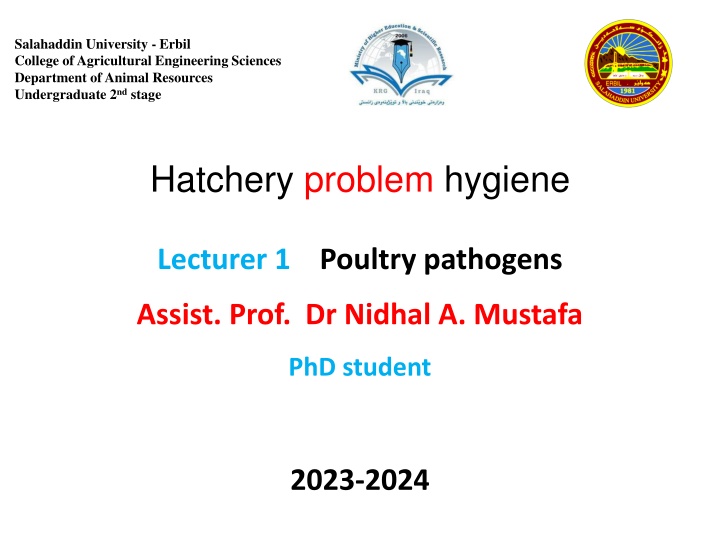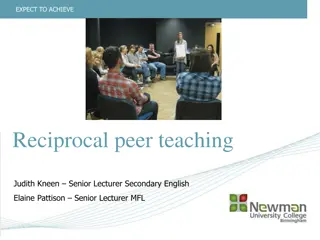
Managing Poultry Pathogens: Importance of Hygiene in Hatcheries
Learn about common poultry pathogens such as E-Coli, Salmonella, and Mycoplasma, and the essential practices of cleaning, disinfection, and cross-contamination prevention in hatcheries to ensure a healthy environment for poultry production.
Download Presentation

Please find below an Image/Link to download the presentation.
The content on the website is provided AS IS for your information and personal use only. It may not be sold, licensed, or shared on other websites without obtaining consent from the author. If you encounter any issues during the download, it is possible that the publisher has removed the file from their server.
You are allowed to download the files provided on this website for personal or commercial use, subject to the condition that they are used lawfully. All files are the property of their respective owners.
The content on the website is provided AS IS for your information and personal use only. It may not be sold, licensed, or shared on other websites without obtaining consent from the author.
E N D
Presentation Transcript
Salahaddin University - Erbil College of Agricultural Engineering Sciences Department of Animal Resources Undergraduate 2nd stage Hatchery problem hygiene Lecturer 1 Poultry pathogens Assist. Prof. Dr Nidhal A. Mustafa PhD student 2023-2024
Poultry pathogens Bacteria: E-Coli, Salmonella, Pasteurella, Clostridium, Streptococci, Staphylococci, Pseudomonas, Proteus , Fungi: Aspergillus, Micro- sporium,
Viruses: ( ND, Fowl Pox, IB, AE, Reo, Marek, Leucosis, ILT, Gumboro, and TRT ) Mycoplasma ( M. Gallisepticum, M. Gallinarum ) Protozoa & Parasites
Cleaning: It is the removal of organic and inorganic material from objects and surfaces. This is normally accomplished by using detergents or enzymatic products. Thorough cleaning is
necessary before disinfection and sterilization because organic and inorganic materials that remain on the surface of instruments interfere with the effectiveness of these processes.
Cleaning and disinfection : To minimize as far as the numbers of micro- organisms.
To reduce cross contamination between clean and dirty areas and between batches of eggs in incubation and hatchers. To minimize the buildup of bacterial flora in the environment of the building.




















